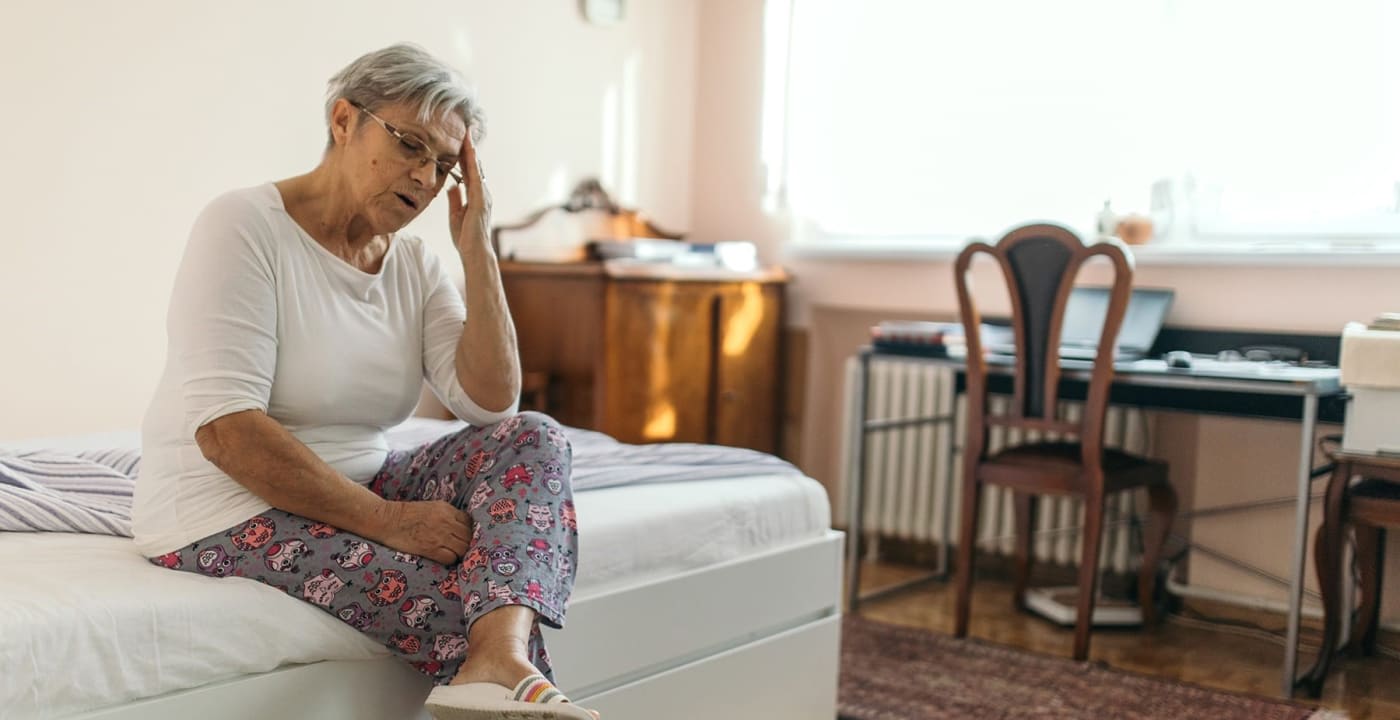Women and stroke: Know your risk, recognize the symptoms & take action

At a glance
- Stroke is among the top five causes of death for women in the United States
- Longer lifespans and hormonal fluctuations in pregnancy and menopause may increase women’s risk of stroke
- Stroke symptoms in women may look different than in men, such as language difficulty and vision loss
Stroke, like lots of things, doesn’t play fair.
According to the American Heart Association, women face a higher risk of experiencing a stroke throughout their lifetime than men. In fact, stroke is among the top five causes of death for women in the United States and a leading cause of disability. By understanding what puts you at greater risk, you can take steps to reduce the odds of having a stroke.
Stroke risk factors for women
A stroke occurs when blood vessels in the brain burst or become blocked, depriving brain cells of oxygen and other nutrients. Why are women at higher risk for stroke then men? Part of it has to do with lifespan. In general, women tend to live longer than men and a person’s risk of experiencing a stroke increases as they age.
“On average, women tend to have strokes at an older age than men and the strokes are often more severe and debilitating,” says Dr. Chuang, MD, PhD, a board-certified neurologist at MultiCare.
There are also other factors at play, namely hormones. Hormonal fluctuations at certain points during the female lifespan can increase the risk of stroke. One of those points is pregnancy.
“A woman’s body has to make a lot of changes in order to accommodate the growth of another human being,” says Dr. Chuang. “During pregnancy, women can experience certain conditions, such as very high blood pressure, that can trigger a stroke if not managed properly,” Dr. Chuang says. “Pregnancy can also make blood more likely to clot, which can increase stroke risk as well.”
Women go through another set of hormonal changes as they enter menopause. “Estrogen is a hormone that protects women from stroke throughout their lives, but estrogen production diminishes as women age, so their risk of stroke goes up,” Dr. Chuang says. “Unfortunately, hormone replacement therapy hasn’t been shown to decrease stroke risk in post-menopausal women. If anything, it actually may slightly raise the risk of cardiovascular disease.”
Other stroke risk factors for women include experiencing migraines with aura — severe, recurrent headaches accompanied by visual or sensory changes — as well as taking some forms of hormonal birth control.
Stroke symptoms
Women and men experience mostly the same stroke symptoms such as the sudden onset of one-sided arm weakness and numbness, difficulty speaking or drooping facial expressions.
However, there can be subtle differences in stroke symptoms among the genders. With a stroke, women can be more likely to have language difficulty, vision loss, inattention to or neglect of one side of the body, as well eye movement preferences, for example looking persistently to one side.
“Some of these symptom differences may be due to the underlying cause of the stroke, which can determine which area of the brain is affected. Women are more likely to experience strokes caused by atrial fibrillation, which is an irregular heartbeat,” Dr. Chuang says. “Atrial fibrillation can lead to blood clots in the heart that can then travel to other organs, like the brain.”
If you or a loved one is experiencing stroke symptoms, don’t wait to see if they improve. Call 911 immediately. Getting to the hospital fast is key to survival and reducing your chance of post-stroke disability.
“It’s better to be overcautious than undercautious,” Dr. Chuang says. “When brain cells are gone, they’re gone. It’s better to have a false alarm than wait and have more disability.”
How women can prevent strokes
While women may be at a greater risk of experiencing stroke than men, the good news is that 80 percent of strokes are preventable. Stop strokes before they happen by:
- Maintaining a healthy body weight
- Eating a nutritious diet
- Exercising regularly
- Monitoring your blood pressure, cholesterol and sodium intake
- Avoiding or quitting tobacco products
If you’re pregnant, approaching menopause or experiencing menopause, now may be a good time to talk with your doctor about your risk for stroke, if you haven’t already.
“Some studies have shown that around the time women first enter menopause, there can be a sudden spike in their LDL cholesterol levels — known as ‘bad cholesterol’ — so it’s important to get screened regularly,” says Dr. Chuang. “Consistently high cholesterol levels can increase your risk of stroke.”
Most women have at least one risk factor for stroke. What’s important is how many risk factors you have and taking steps within your control to lessen the accumulation of those risk factors.
What's next
- Learn about MultiCare’s award-winning stroke program
- Find a provider near you to talk about your risk of stroke
- How to spot the warning signs of a stroke



